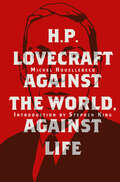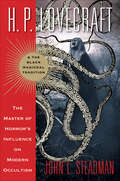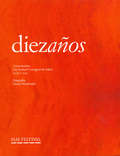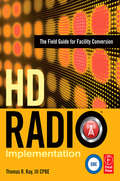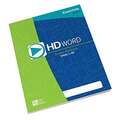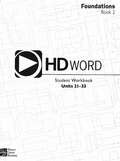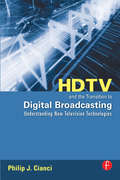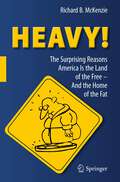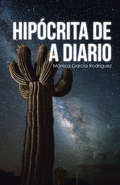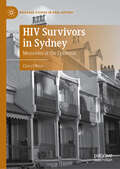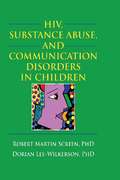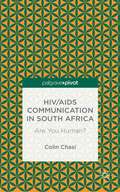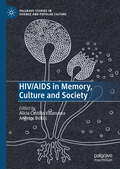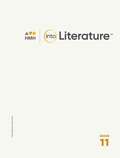- Table View
- List View
H. P. Lovecraft: Against the World, Against Life
by Michel HouellebecqThe award-winning French novelist pays tribute to a literary hero in this critical biography of the master of horror—with a foreword by Stephen King.Best known for his acclaimed novels, such as the Prix Goncourt-winning The Map and the Territory, Michael Houellebecq devotes his single work of nonfiction to the pioneering author of horror and weird fiction, H. P. Lovecraft. In a volume that is part biographical sketch and part pronouncement on existence and literature, France's most famous contemporary author praises his prewar American alter ego, whose style couldn't be less like his own.With a foreword by Lovecraft admirer Stephen King, this eloquently translated edition is an insightful introduction to both Lovecraft’s dark mythology and Houellebecq’s deadpan prose.
H.P. Lovecraft & the Black Magickal Tradition: The Master of Horror's Influence on Modern Occultism
by John L. SteadmanA Lovecraft scholar presents a penetrating study of the author’s life, work, and connections to modern occultism.Many practicing occultists have speculated that H. P. Lovecraft possessed in-depth knowledge of black magick. Yet literary scholars maintain the renowned horror writer was simply a master of his craft, and that the enduring power of his work is purely the result of his rich imagination.In H.P. Lovecraft & the Black Magical Tradition, John L. Steadman examines the considerable overlap between the author’s fictions and true occultism—and consider whether Lovecraft was a practitioner of the dark arts himself.Weaving Lovecraft’s biography together with literary criticism and modern magickal systems, Steadman demonstrates that Lovecraft’s works—specifically his Cthulhu Mythos and his creation of the Necronomicon—represent the basis for a legitimate magickal system.
HAY FESTIVAL. DIEZ AÑOS
by AVILA PINTO, LUIS RIConversaciones en Cartagena de Indias con HéctorAbad Faciolince, Jaime Abello Ban?, Cristian Alarcón,Alessandro Baricco, Philip Boehm, Piedad Bonnett,Lydia Cacho, Martín Caparrós, Javier Cercas, SergioDahbar, Erri De Luca, Junot Díaz, José ÁngelFernández, Peter Florence, Carlos Fuentes, SantiagoGamboa, David Grossman, Wilder Guerra, MarioJursich, Eduardo Lago, Jonathan Levi, Valeria Luiselli,Ian McEwan, Rosa Montero, Herta Müller, NélidaPiñon, Marianne Ponsford, David Rie?, SalmanRushdie, Daniel Samper Pizano, Estercilia Simancas,Vicenta Siosi y Juan Gabriel Vásque
HAY FESTIVAL. DIEZ AÑOS
by Fundacion Hay Festival De ColombiaConversatorios Hay Festival Cartagena de Indias 2006-2015 Conversaciones en Cartagena de Indias con HéctorAbad Faciolince, Jaime Abello Ban?, Cristian Alarcón,Alessandro Baricco, Philip Boehm, Piedad Bonnett,Lydia Cacho, Martín Caparrós, Javier Cercas, SergioDahbar, Erri De Luca, Junot Díaz, José ÁngelFernández, Peter Florence, Carlos Fuentes, SantiagoGamboa, David Grossman, Wilder Guerra, MarioJursich, Eduardo Lago, Jonathan Levi, Valeria Luiselli,Ian McEwan, Rosa Montero, Herta Müller, NélidaPiñon, Marianne Ponsford, David Rie?, SalmanRushdie, Daniel Samper Pizano, Estercilia Simancas,Vicenta Siosi y Juan Gabriel Vásque
HBJ Language: Medallion Edition (Grade #4)
by Harcourt Brace Jovanovich StaffLanguage Medallion: Grade 4 is an English book that helps the readers communicate correctly and effectively in English.
HD Radio Implementation: The Field Guide for Facility Conversion
by Thomas R. RayTake the mystery out of the conversion to HD Radio transmission with this hands-on approach to implementation. HD Radio Implementation will take this new subject and make it familiar. With details and descriptions of what HD Radio is, what changes are necessary and unnecessary in the studio, STL path and audio chain, it takes this new technology and makes it friendly so you can successfully convert your station. After reading this book, you will come away with an understanding of how to implement HD Radio for your facility with a minimum of hassles. It is intended to be read and understood by the station Engineer, but the General Manager, Program Director and Operations Director will be able to understand the nature of HD Radio and how it will affect their facility.
HD Word Essentials Student Workbook 1 UNITS 1 to 20
by Really Great Reading CompanyReally Great Reading Company STUDENT WORKBOOK 1 UN
HD Word Essentials Student Workbook 2 (Grades 5-8) UNITS 21-33
by Really Great Reading CompanyHD Word, Essentials Student Workbook 2 (Grades 5-8) UNITS 21-33
HDTV and the Transition to Digital Broadcasting: Understanding New Television Technologies
by Philip J. CianciHDTV and the Transition to Digital Broadcasting bridges the gap between non-technical personnel (management and creative) and technical by giving you a working knowledge of digital television technology, a clear understanding of the challenges of HDTV and digital broadcasting, and a scope of the ramifications of HDTV in the consumer space. Topics include methodologies and issues in HD production and distribution, as well as HDTV's impact on the future of the media business. This book contains sidebars and system diagrams that illustrate examples of broadcaster implementation of HD and HD equipment. Additionally, future trends including the integration of broadcast engineering and IT, control and descriptive metadata, DTV interactivity and personalization are explored.
HEAVY!
by Richard B. MckenzieAmerica's emerging "fat war" threatens to pit a shrinking population of trim Americans against an expanding population of heavy Americans in raging policy debates over "fat taxes" and "fat bans." These "fat policies" would be designed to constrain what people eat and drink - and theoretically crimp the growth in Americans' waistlines and in the country's healthcare costs. Richard McKenzie's HEAVY! The Surprising Reasons America Is the Land of the Free--And the Home of the Fat offers new insight into the economic causes and consequences of America's dramatic weight gain over the past half century. It also uncovers the follies of seeking to remedy the country's weight problems with government intrusions into people's excess eating, arguing that controlling people's eating habits is fundamentally different from controlling people's smoking habits. McKenzie controversially links America's weight gain to a variety of causes: the growth in world trade freedom, the downfall of communism, the spread of free-market economics, the rise of women's liberation, the long-term fall in real minimum wage,and the rise of competitive markets on a global scale. In no small way - no, in a very BIG way - America is the "home of the fat" because it has been for so long the "land of the free." Americans' economic, if not political, freedoms, however, will come under siege as well-meaning groups of "anti-fat warriors" seek to impose their dietary, health, and healthcare values on everyone else. HEAVY! details the unheralded consequences of the country's weight gain, which include greater fuel consumption and emissions of greenhouse gases, reduced fuel efficiency of cars and planes, growth in health insurance costs and fewer insured Americans, reductions in the wages of heavy people, and required reinforcement of rescue equipment and hospital operating tables. McKenzie advocates a strong free-market solution to how America's weight problems should and should not be solved. For Americans to retain their cherished economic freedoms of choice, heavy people must be held fully responsible for their weight-related costs and not be allowed to shift blame for their weight to their genes or environment. Allowing heavy Americans to shift responsibility for their weight gain can only exacerbate the country's weight problems.
HIPÓCRITA DE A DIARIO
by Monica Garcia RodriguezMi hija tiene un diario en el que escribe casi a diario... Empezamos mal, esto nunca llegará a ser un bestseller. <P><P> Arturo, un hombre que olvidó que tenía sentido del humor, comienza a sus 42 años, a escribir un diario con el fin de dar cuerpo a un propósito: enviar a su jefe a la cárcel y restregarle todas las palabras escritas que nunca se atrevió a decirle. <P><P>Paralelamente a este cometido se da cuenta de que le ha cogido gustillo a la escritura y desarrolla una serie de relatos inspirados en sueños, en las historias de los personajes que van apareciendo en su vida, e incluso en aquellas ideas que le consiguen liberar poco a poco de su hipócrita realidad. <P>Para ello diseña en la última mitad de su diario un desván imaginativo que acabará cargado de la moral, el amor, la furia, la rebeldía, la ironía y el talante, del propio Arturo.
HIV Survivors in Sydney: Memories of the Epidemic (Palgrave Studies in Oral History)
by Cheryl WareInner-city Sydney was the epicenter of gay life in the Southern hemisphere in the 1970s and early 1980s. Gay men moved from across Australasia to find liberation in the city’s vibrant community networks; and when HIV and AIDS devastated those networks, they grieved, suffered, and survived in ways that have often been left out of the historical record. This book excavates the intimate lives and memories of HIV-positive gay men in Sydney, focusing on the critical years between 1982 and 1996, when HIV went from being a terrifying unidentified disease to a chronic condition that could be managed with antiretroviral medication. Using oral histories and archival research, Cheryl Ware offers a sensitive, moving exploration of how HIV-positive gay men navigated issues around disclosure, health, sex, grief, death, and survival. HIV Survivors in Sydney reveals how gay men dealt with the virus both within and outside of support networks, and how they remember these experiences nearly three decades later.
HIV, Substance Abuse, and Communication Disorders in Children
by R. Dennis Shelby Robert M. ScreenMake sure every child gets a chance to be heardHIV, Substance Abuse and Communication Disorders in Children examines the language problems of young children from special populations. Essential as a textbook for graduate and upper-level undergraduate studies and as a reference resource, this unique book presents up-to-date research and compelling case studies that illustrate how prenatal exposure to drugs, alcohol, and HIV can affect a child in utero and continue to handicap its development after birth. Each chapter includes discussion threads and review questions to promote critical thinking and clinical problem-solving skills in the classroom.HIV, Substance Abuse and Communication Disorders in Children looks at the negative impact a mother&’s lifestyle practices can have on her developing child with a nod toward the significant prevalence of HIV and substance abuse in today&’s society. Some estimates place the number of infants born after prenatal exposure to illicit drugs as three-quarters of a million-every year. When alcohol is added, the figure rises to more than 1 million. This powerful book focuses specifically on the serious consequences of alcohol, marijuana, cocaine, and crack cocaine abuse, including poor language development and speech delays, limited vocabulary, the inability to make their needs known, poor articulation, the inability to follow commands, limited expressive language skills, and the inability to understand the real meaning of words and generalize them. And of the nearly 5,000 children in the United States living with AIDS, almost all will struggle with speech production and communication disorders as the disease affects their brain, spinal cord, and central nervous system. HIV, Substance Abuse and Communication Disorders in Children examines: the effect of drugs on the brain pregnancy and drug use trends common drugs of abuse Kosakoff&’s syndrome fetal alcohol syndrome (FAS) among Native Americans and African Americans neurologic sequellae speech and language intervention rehabilitation considerations treatment and family counseling and much moreHIV, Substance Abuse and Communication Disorders in Children is essential for graduate and undergraduate students working with language disorders in special populations.
HIV/AIDS Communication in South Africa: Are You Human?
by Colin ChasiEven though sub-Saharan Africa is the region most affected by HIV/AIDS in the world, no new theories have been discovered, and questions about life and death are ignored. This book uses certain selected communication practices to offer the foundations of an African theory of communication, applicable to the crisis of HIV/AIDS.
HIV/AIDS in Memory, Culture and Society (Palgrave Studies in Science and Popular Culture)
by Alicia Castillo Villanueva Angelos BollasThis volume examines the role of culture in developing social, cultural and political discourses of HIV/AIDS from a contemporary viewpoint. In doing so, the memory of HIV/AIDS is a powerful tool to examine representations of the past and connect them with future debates. This reassessment of HIV/AIDS explores the most appropriate way to come to terms with a past that involved a negative, stigmatised and marginalised representation. Therefore, remembering plays a key role in generating collective memory, which allows for the exchange of mnemonic content between individual minds, creates discourses on memory and commemoration, and disseminates versions of the past that may affect the representation of HIV/AIDS in the future. Indeed, rewriting about the past also means assessing our responsibility towards the present and the potential of transmission to future generations, especially in times of pandemics.
HMH Into Literature™ [Grade 6] (Into Reading)
by Kylene Beers Elena Izquierdo Martha HougenNIMAC-sourced textbook
HMH Into Literature™, Grade 10
by Kylene Beers Tyrone C. Howard Martha HougenNIMAC-sourced textbook
HMH Into Literature™, Grade 10 (Into Literature)
by Kylene Beers Elena Izquierdo Martha HougenNIMAC-sourced textbook
HMH Into Literature™, Grade 11
by Kylene Beers Tyrone C. Howard Martha HougenNIMAC-sourced textbook
HMH Into Literature™, Grade 11, Grammar Practice
by Houghton Mifflin HarcourtNIMAC-sourced textbook
HMH Into Literature™, Grade 12
by Kylene Beers Tyrone C. Howard Martha HougenNIMAC-sourced textbook
